| Citation: |
Xinyu Huang, Xu Han, Yunyun Dai, Xiaolong Xu, Jiahao Yan, Mengting Huang, Pengfei Ding, Decheng Zhang, Hui Chen, Vijay Laxmi, Xu Wu, Liwei Liu, Yeliang Wang, Yang Xu, Yuan Huang. Recent progress on fabrication and flat-band physics in 2D transition metal dichalcogenides moiré superlattices[J]. Journal of Semiconductors, 2023, 44(1): 011901. doi: 10.1088/1674-4926/44/1/011901
****
X Y Huang, X Han, Y Y Dai, X L Xu, J H Yan, M T Huang, P F Ding, D C Zhang, H Chen, V Laxmi, X Wu, L W Liu, Y L Wang, Y Xu, Y Huang. Recent progress on fabrication and flat-band physics in 2D transition metal dichalcogenides moiré superlattices[J]. J. Semicond, 2023, 44(1): 011901. doi: 10.1088/1674-4926/44/1/011901
|
Recent progress on fabrication and flat-band physics in 2D transition metal dichalcogenides moiré superlattices
DOI: 10.1088/1674-4926/44/1/011901
More Information
-
Abstract
Moiré superlattices are formed when overlaying two materials with a slight mismatch in twist angle or lattice constant. They provide a novel platform for the study of strong electronic correlations and non-trivial band topology, where emergent phenomena such as correlated insulating states, unconventional superconductivity, and quantum anomalous Hall effect are discovered. In this review, we focus on the semiconducting transition metal dichalcogenides (TMDs) based moiré systems that host intriguing flat-band physics. We first review the exfoliation methods of two-dimensional materials and the fabrication technique of their moiré structures. Secondly, we overview the progress of the optically excited moiré excitons, which render the main discovery in the early experiments on TMD moiré systems. We then introduce the formation mechanism of flat bands and their potential in the quantum simulation of the Hubbard model with tunable doping, degeneracies, and correlation strength. Finally, we briefly discuss the challenges and future perspectives of this field. -
References
[1] Von Klitzing K. The quantized Hall effect. Rev Mod Phys, 1986, 58, 519 doi: 10.1103/RevModPhys.58.519[2] Stormer H L, Tsui D C, Gossard A C. The fractional quantum Hall effect. Rev Mod Phys, 1999, 71, S298 doi: 10.1103/RevModPhys.71.S298[3] Stern A. Non-Abelian states of matter. Nature, 2010, 464, 187 doi: 10.1038/nature08915[4] Chung T F, Xu Y, Chen Y P. Transport measurements in twisted bilayer graphene: Electron-phonon coupling and Landau level crossing. Phys Rev B, 2018, 98, 035425 doi: 10.1103/PhysRevB.98.035425[5] Wu F C, Lovorn T, Tutuc E, et al. Hubbard model physics in transition metal dichalcogenide moiré bands. Phys Rev Lett, 2018, 121, 026402 doi: 10.1103/PhysRevLett.121.026402[6] Li T X, Jiang S W, Shen B W, et al. Quantum anomalous Hall effect from intertwined moiré bands. Nature, 2021, 600, 641 doi: 10.1038/s41586-021-04171-1[7] Cao Y, Fatemi V, Demir A, et al. Correlated insulator behaviour at half-filling in magic-angle graphene superlattices. Nature, 2018, 556, 80 doi: 10.1038/nature26154[8] Cao Y, Fatemi V, Fang S A, et al. Unconventional superconductivity in magic-angle graphene superlattices. Nature, 2018, 556, 43 doi: 10.1038/nature26160[9] Andrei E Y, MacDonald A H. Graphene bilayers with a twist. Nat Mater, 2020, 19, 1265 doi: 10.1038/s41563-020-00840-0[10] Balents L, Dean C R, Efetov D K, et al. Superconductivity and strong correlations in moiré flat bands. Nat Phys, 2020, 16, 725 doi: 10.1038/s41567-020-0906-9[11] Kennes D M, Claassen M, Xian L D, et al. Moiré heterostructures as a condensed-matter quantum simulator. Nat Phys, 2021, 17, 155 doi: 10.1038/s41567-020-01154-3[12] Bistritzer R, MacDonald A H. Moire bands in twisted double-layer graphene. PNAS, 2011, 108, 12233 doi: 10.1073/pnas.1108174108[13] Yankowitz M, Chen S W, Polshyn H, et al. Tuning superconductivity in twisted bilayer graphene. Science, 2019, 363, 1059 doi: 10.1126/science.aav1910[14] Lu X B, Stepanov P, Yang W, et al. Superconductors, orbital magnets and correlated states in magic-angle bilayer graphene. Nature, 2019, 574, 653 doi: 10.1038/s41586-019-1695-0[15] Yang H, Liu L W, Yang H X, et al. Advance in two-dimensional twisted moiré materials: Fabrication, properties, and applications. Nano Res, 2022, 1 doi: 10.1007/s12274-022-5025-8[16] Sharpe A L, Fox E J, Barnard A W, et al. Emergent ferromagnetism near three-quarters filling in twisted bilayer graphene. Science, 2019, 365, 605 doi: 10.1126/science.aaw3780[17] Serlin M, Tschirhart C L, Polshyn H, et al. Intrinsic quantized anomalous Hall effect in a moiré heterostructure. Science, 2020, 367, 900 doi: 10.1126/science.aay5533[18] Wilson N P, Yao W, Shan J, et al. Excitons and emergent quantum phenomena in stacked 2D semiconductors. Nature, 2021, 599, 383 doi: 10.1038/s41586-021-03979-1[19] Mak K F, Shan J. Semiconductor moiré materials. Nat Nanotechnol, 2022, 17, 686 doi: 10.1038/s41565-022-01165-6[20] Regan E C, Wang D Q, Paik E Y, et al. Emerging exciton physics in transition metal dichalcogenide heterobilayers. Nat Rev Mater, 2022, 7, 778 doi: 10.1038/s41578-022-00440-1[21] Huang D, Choi J, Shih C K, et al. Excitons in semiconductor moiré superlattices. Nat Nanotechnol, 2022, 17, 227 doi: 10.1038/s41565-021-01068-y[22] Tran K, Choi J, Singh A. Moiré and beyond in transition metal dichalcogenide twisted bilayers. 2D Mater, 2020, 8, 022002 doi: 10.1088/2053-1583/abd3e7[23] Andrei E Y, Efetov D K, Jarillo-Herrero P, et al. The marvels of moiré materials. Nat Rev Mater, 2021, 6, 201 doi: 10.1038/s41578-021-00284-1[24] Woods C R, Ares P, Nevison-Andrews H, et al. Charge-polarized interfacial superlattices in marginally twisted hexagonal boron nitride. Nat Commun, 2021, 12, 347 doi: 10.1038/s41467-020-20667-2[25] Xu Y, Ray A, Shao Y T, et al. Coexisting ferromagnetic–antiferromagnetic state in twisted bilayer CrI3. Nat Nanotechnol, 2022, 17, 143 doi: 10.1038/s41565-021-01014-y[26] Song T C, Sun Q C, Anderson E, et al. Direct visualization of magnetic domains and moiré magnetism in twisted 2D magnets. Science, 2021, 374, 1140 doi: 10.1126/science.abj7478[27] Xie H C, Luo X P, Ye G H, et al. Twist engineering of the two-dimensional magnetism in double bilayer chromium triiodide homostructures. Nat Phys, 2022, 18, 30 doi: 10.1038/s41567-021-01408-8[28] Wang L, Shih E M, Ghiotto A, et al. Correlated electronic phases in twisted bilayer transition metal dichalcogenides. Nat Mater, 2020, 19, 861 doi: 10.1038/s41563-020-0708-6[29] Devakul T, Crépel V, Zhang Y, et al. Magic in twisted transition metal dichalcogenide bilayers. Nat Commun, 2021, 12, 6730 doi: 10.1038/s41467-021-27042-9[30] Naik M H, Jain M. Ultraflatbands and shear solitons in moiré patterns of twisted bilayer transition metal dichalcogenides. Phys Rev Lett, 2018, 121, 266401 doi: 10.1103/PhysRevLett.121.266401[31] Wang G, Chernikov A, Glazov M M, et al. Excitons in atomically thin transition metal dichalcogenides. Colloquium: Excitons in atomically thin transition metal dichalcogenides. Rev Mod Phys, 2018, 90, 021001 doi: 10.1103/RevModPhys.90.021001[32] Mak K F, Xiao D, Shan J. Light–valley interactions in 2D semiconductors. Nat Photonics, 2018, 12, 451 doi: 10.1038/s41566-018-0204-6[33] Meng L, Wang Y L, Zhang L Z, et al. Buckled silicene formation on Ir(111). Nano Lett, 2013, 13, 685 doi: 10.1021/nl304347w[34] Hao Y F, Wang L, Liu Y Y, et al. Oxygen-activated growth and bandgap tunability of large single-crystal bilayer graphene. Nat Nanotechnol, 2016, 11, 426 doi: 10.1038/nnano.2015.322[35] Sutter P W, Flege J I, Sutter E A. Epitaxial graphene on ruthenium. Nat Mater, 2008, 7, 406 doi: 10.1038/nmat2166[36] Chang C, Chen W, Chen Y, et al. Recent progress on two-dimensional materials. Acta Phys Chim Sin, 2021, 37, 2108017 doi: 10.3866/PKU.WHXB202108017[37] Wang K, Huang B, Tian M K, et al. Interlayer coupling in twisted WSe2/WS2 bilayer heterostructures revealed by optical spectroscopy. ACS Nano, 2016, 10, 6612 doi: 10.1021/acsnano.6b01486[38] Novoselov K S, Geim A K, Morozov S V, et al. Electric field effect in atomically thin carbon films. Science, 2004, 306, 666 doi: 10.1126/science.1102896[39] Zhang Y B, Tan Y W, Stormer H L, et al. Experimental observation of the quantum Hall effect and Berry's phase in graphene. Nature, 2005, 438, 201 doi: 10.1038/nature04235[40] Radisavljevic B, Radenovic A, Brivio J, et al. Single-layer MoS2 transistors. Nat Nanotechnol, 2011, 6, 147 doi: 10.1038/nnano.2010.279[41] Zhao W J, Ghorannevis Z, Chu L Q, et al. Evolution of electronic structure in atomically thin sheets of WS2 and WSe2. ACS Nano, 2013, 7, 791 doi: 10.1021/nn305275h[42] Huang Y, Sutter E, Shi N N, et al. Reliable exfoliation of large-area high-quality flakes of graphene and other two-dimensional materials. ACS Nano, 2015, 9, 10612 doi: 10.1021/acsnano.5b04258[43] Huang Y, Wang X, Zhang X, et al. Raman spectral band oscillations in large graphene bubbles. Phys Rev Lett, 2018, 120, 186104 doi: 10.1103/PhysRevLett.120.186104[44] Magda G Z, Pető J, Dobrik G, et al. Exfoliation of large-area transition metal chalcogenide single layers. Sci Rep, 2015, 5, 14714 doi: 10.1038/srep14714[45] Desai S B, Madhvapathy S R, Amani M, et al. Gold-mediated exfoliation of ultralarge optoelectronically-perfect monolayers. Adv Mater, 2016, 28, 4053 doi: 10.1002/adma.201506171[46] Velický M, Donnelly G E, Hendren W R, et al. Mechanism of gold-assisted exfoliation of centimeter-sized transition-metal dichalcogenide monolayers. ACS Nano, 2018, 12, 10463 doi: 10.1021/acsnano.8b06101[47] Huang Y, Pan Y H, Yang R, et al. Universal mechanical exfoliation of large-area 2D crystals. Nat Commun, 2020, 11, 2453 doi: 10.1038/s41467-020-16266-w[48] Huang Y, Wang Y K, Huang X Y, et al. An efficient route to prepare suspended monolayer for feasible optical and electronic characterizations of two-dimensional materials. InfoMat, 2022, 4, e12274 doi: 10.1002/inf2.12274[49] Liu F, Wu W J, Bai Y S, et al. Disassembling 2D van der Waals crystals into macroscopic monolayers and reassembling into artificial lattices. Science, 2020, 367, 903 doi: 10.1126/science.aba1416[50] Castellanos-Gomez A, Duan X F, Fei Z, et al. Van der waals heterostructures. Nat Rev Methods Primers, 2022, 2, 58 doi: 10.1038/s43586-022-00139-1[51] Fu Q, Dai J Q, Huang X Y, et al. One-step exfoliation method for plasmonic activation of large-area 2D crystals. Adv Sci, 2022, 9, e2204247 doi: 10.1002/advs.202204247[52] Shi J W, Wu X X, Wu K M, et al. Giant enhancement and directional second harmonic emission from monolayer WS2 on silicon substrate via fabry-Pérot micro-cavity. ACS Nano, 2022, 16, 13933 doi: 10.1021/acsnano.2c03033[53] Kim K, DaSilva A, Huang S Q, et al. Tunable moiré bands and strong correlations in small-twist-angle bilayer graphene. Proc Natl Acad Sci USA, 2017, 114, 3364 doi: 10.1073/pnas.1620140114[54] Chen X D, Xin W, Jiang W S, et al. High-precision twist-controlled bilayer and trilayer graphene. Adv Mater, 2016, 28, 2563 doi: 10.1002/adma.201505129[55] Liao M Z, Wei Z, Du L J, et al. Precise control of the interlayer twist angle in large scale MoS2 homostructures. Nat Commun, 2020, 11, 2153 doi: 10.1038/s41467-020-16056-4[56] Yu H, Liao M Z, Zhao W J, et al. Wafer-scale growth and transfer of highly-oriented monolayer MoS2 continuous films. ACS Nano, 2017, 11, 12001 doi: 10.1021/acsnano.7b03819[57] Wu F C, Lovorn T, MacDonald A H. Topological exciton bands in moiré heterojunctions. Phys Rev Lett, 2017, 118, 147401 doi: 10.1103/PhysRevLett.118.147401[58] Yu H Y, Liu G B, Tang J J, et al. Moiré excitons: From programmable quantum emitter arrays to spin-orbit-coupled artificial lattices. Sci Adv, 2017, 3, e1701696 doi: 10.1126/sciadv.1701696[59] Tran K, Moody G, Wu F C, et al. Evidence for moiré excitons in van der waals heterostructures. Nature, 2019, 567, 71 doi: 10.1038/s41586-019-0975-z[60] Jin C H, Regan E C, Yan A M, et al. Observation of moiré excitons in WSe2/WS2 heterostructure superlattices. Nature, 2019, 567, 76 doi: 10.1038/s41586-019-0976-y[61] Alexeev E M, Ruiz-Tijerina D A, Danovich M, et al. Resonantly hybridized excitons in moiré superlattices in van der waals heterostructures. Nature, 2019, 567, 81 doi: 10.1038/s41586-019-0986-9[62] Liu E F, Barré E, van Baren J, et al. Signatures of moiré trions in WSe2/MoSe2 heterobilayers. Nature, 2021, 594, 46 doi: 10.1038/s41586-021-03541-z[63] Karni O, Barré E, Pareek V, et al. Structure of the moiré exciton captured by imaging its electron and hole. Nature, 2022, 603, 247 doi: 10.1038/s41586-021-04360-y[64] Susarla S, Naik M H, Blach D D, et al. Hyperspectral imaging of excitons within a moiré unit-cell with a sub-nanometer electron probe. arXiv: 2207.13823, 2022 doi: 10.48550/arXiv.2207.13823[65] Schmitt D, Bange J P, Bennecke W, et al. Formation of moiré interlayer excitons in space and time. Nature, 2022, 608, 499 doi: 10.1038/s41586-022-04977-7[66] Naik M H, Regan E C, Zhang Z C, et al. Intralayer charge-transfer moiré excitons in van der Waals superlattices. Nature, 2022, 609, 52 doi: 10.1038/s41586-022-04991-9[67] Kane C L, Mele E J. Quantum spin Hall effect in graphene. Phys Rev Lett, 2005, 95, 226801 doi: 10.1103/PhysRevLett.95.226801[68] Hohenadler M, Assaad F F. Correlation effects in two-dimensional topological insulators. J Phys Condens Mat, 2013, 25, 143201 doi: 10.1088/0953-8984/25/14/143201[69] Yoshioka T, Koga A, Kawakami N. Quantum phase transitions in the Hubbard model on a triangular lattice. Phys Rev Lett, 2009, 103, 036401 doi: 10.1103/PhysRevLett.103.036401[70] Yang H Y, Läuchli A M, Mila F, et al. Effective spin model for the spin-liquid phase of the Hubbard model on the triangular lattice. Phys Rev Lett, 2010, 105, 267204 doi: 10.1103/PhysRevLett.105.267204[71] Aryanpour K, Pickett W E, Scalettar R T. Dynamical Mean-field study of the Mott transition in the half-filled Hubbard model on a triangular lattice. Phys Rev B, 2006, 74, 085117 doi: 10.1103/PhysRevB.74.085117[72] Sahebsara P, Sénéchal D. Hubbard model on the triangular lattice: Spiral order and spin liquid. Phys Rev Lett, 2008, 100, 136402 doi: 10.1103/PhysRevLett.100.136402[73] Shirakawa T, Tohyama T, Kokalj J, et al. Ground state phase diagram of the triangular lattice Hubbard model by density matrix renormalization group method. Phys Rev B, 2017, 96, 205130 doi: 10.1103/PhysRevB.96.205130[74] Szasz A, Motruk J, Zaletel M P, et al. Chiral spin liquid phase of the triangular lattice Hubbard model: A density matrix renormalization group study. Phys Rev X, 2020, 10, 021042 doi: 10.1103/PhysRevX.10.021042[75] Tang Y H, Li L Z, Li T X, et al. Simulation of Hubbard model physics in WSe2/WS2 moiré superlattices. Nature, 2020, 579, 353 doi: 10.1038/s41586-020-2085-3[76] Regan E C, Wang D, Jin C, et al. Mott and generalized Wigner crystal states in WSe2/WS2 moiré superlattices. Nature, 2020, 579, 359 doi: 10.1038/s41586-020-2092-4[77] Shimazaki Y, Schwartz I, Watanabe K, et al. Strongly correlated electrons and hybrid excitons in a moiré heterostructure. Nature, 2020, 580, 472 doi: 10.1038/s41586-020-2191-2[78] Xu Y, Liu S, Rhodes D A, et al. Correlated insulating states at fractional fillings of moiré superlattices. Nature, 2020, 587, 214 doi: 10.1038/s41586-020-2868-6[79] Jin C H, Tao Z, Li T X, et al. Stripe phases in WSe2/WS2 moiré superlattices. Nat Mater, 2021, 20, 940 doi: 10.1038/s41563-021-00959-8[80] Li T X, Zhu J C, Tang Y H, et al. Charge-order-enhanced capacitance in semiconductor moiré superlattices. Nat Nanotechnol, 2021, 16, 1068 doi: 10.1038/s41565-021-00955-8[81] Huang X, Wang T M, Miao S N, et al. Correlated insulating states at fractional fillings of the WS2/WSe2 moiré lattice. Nat Phys, 2021, 17, 715 doi: 10.1038/s41567-021-01171-w[82] Liu E F, Taniguchi T, Watanabe K, et al. Excitonic and valley-polarization signatures of fractional correlated electronic phases in a WSe2/WS2 moiré superlattice. Phys Rev Lett, 2021, 127, 037402 doi: 10.1103/PhysRevLett.127.037402[83] Li H Y, Li S W, Regan E C, et al. Imaging two-dimensional generalized Wigner crystals. Nature, 2021, 597, 650 doi: 10.1038/s41586-021-03874-9[84] Xu Y, Kang K F, Watanabe K, et al. A tunable bilayer Hubbard model in twisted WSe2. Nat Nanotechnol, 2022, 17, 934 doi: 10.1038/s41565-022-01180-7[85] Zhang Y H, Sheng D N, Vishwanath A. SU(4) chiral spin liquid, exciton supersolid, and electric detection in moiré bilayers. Phys Rev Lett, 2021, 127, 247701 doi: 10.1103/PhysRevLett.127.247701[86] Li T X, Jiang S W, Li L Z, et al. Continuous Mott transition in semiconductor moiré superlattices. Nature, 2021, 597, 350 doi: 10.1038/s41586-021-03853-0[87] Zhang M, Zhao X, Watanabe K, et al. Pomeranchuk effect and tunable quantum phase transitions in 3L-MoTe2/WSe2. Phys Rev X, 2022, 12, 041015 doi: 10.1103/PhysRevX.12.041015[88] Wu F C, Lovorn T, Tutuc E, et al. Topological insulators in twisted transition metal dichalcogenide homobilayers. Phys Rev Lett, 2019, 122, 086402 doi: 10.1103/PhysRevLett.122.086402[89] Pan H N, Wu F C, Sarma S D. Band topology, Hubbard model, Heisenberg model, and Dzyaloshinskii-Moriya interaction in twisted bilayer WSe2. Phys Rev Res, 2020, 2, 033087 doi: 10.1103/PhysRevResearch.2.033087[90] Zhou B T, Egan S, Franz M. Moiré flat Chern bands and correlated quantum anomalous Hall states generated by spin-orbit couplings in twisted homobilayer MoS2. Phys Rev Res, 2022, 4(1), L012032 doi: 10.1103/PhysRevResearch.4.L012032[91] Zhang Y, Devakul T, Fu L. Spin-textured Chern bands in AB-stacked transition metal dichalcogenide bilayers. Proc Natl Acad Sci USA, 2021, 118, e2112673118 doi: 10.1073/pnas.2112673118[92] Rademaker L. Spin-orbit coupling in transition metal dichalcogenide heterobilayer flat bands. Phys Rev B, 2022, 105, 195428 doi: 10.1103/PhysRevB.105.195428[93] Xie Y M, Zhang C P, Hu J X, et al. Valley-polarized quantum anomalous hall state in moiré MoTe2/WSe2 heterobilayers. Phys Rev Lett, 2022, 128, 026402 doi: 10.1103/PhysRevLett.128.026402[94] Ribeiro-Palau R, Zhang C J, Watanabe K, et al. Twistable electronics with dynamically rotatable heterostructures. Science, 2018, 361, 690 doi: 10.1126/science.aat6981[95] Hu C, Wu T Y, Huang X Y, et al. In-situ twistable bilayer graphene. Sci Rep, 2022, 12, 204 doi: 10.1038/s41598-021-04030-z[96] Inbar A, Birkbeck J, Xiao J W, et al. The quantum twisting microscope. arXiv: 2208.05492, 2022[97] Purdie D G, Pugno N M, Taniguchi T, et al. Cleaning interfaces in layered materials heterostructures. Nat Commun, 2018, 9, 5387 doi: 10.1038/s41467-018-07558-3[98] Li H Q, Kumar U, Sun K, et al. Spontaneous fractional Chern insulators in transition metal dichalcogenides Moire superlattices. Phys Rev Res, 2021, 3, L032070 doi: 10.1103/PhysRevResearch.3.L032070[99] Bi Z, Fu L. Excitonic density wave and spin-valley superfluid in bilayer transition metal dichalcogenide. Nat Commun, 2021, 12, 642 doi: 10.1038/s41467-020-20802-z -
Proportional views






 DownLoad:
DownLoad:
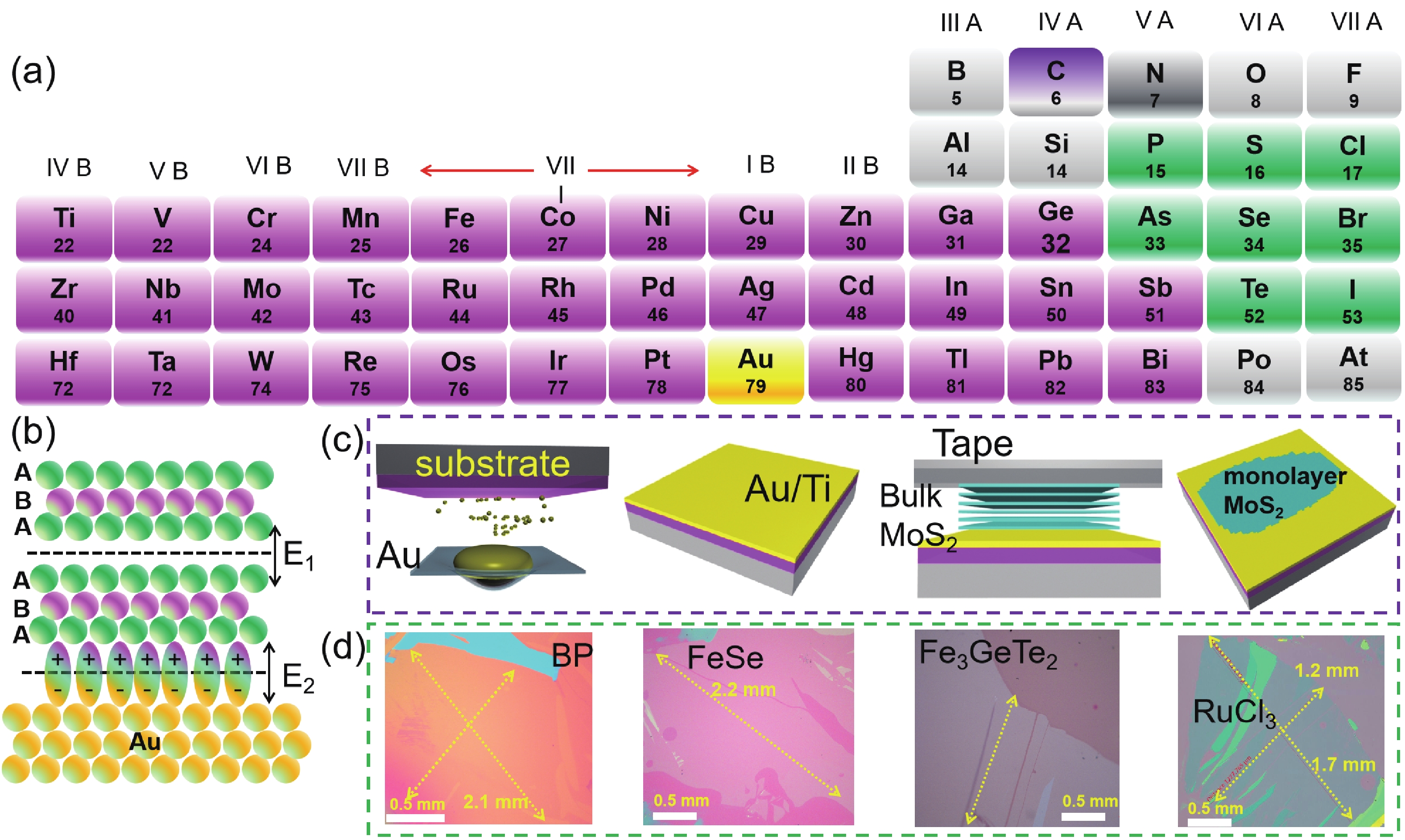
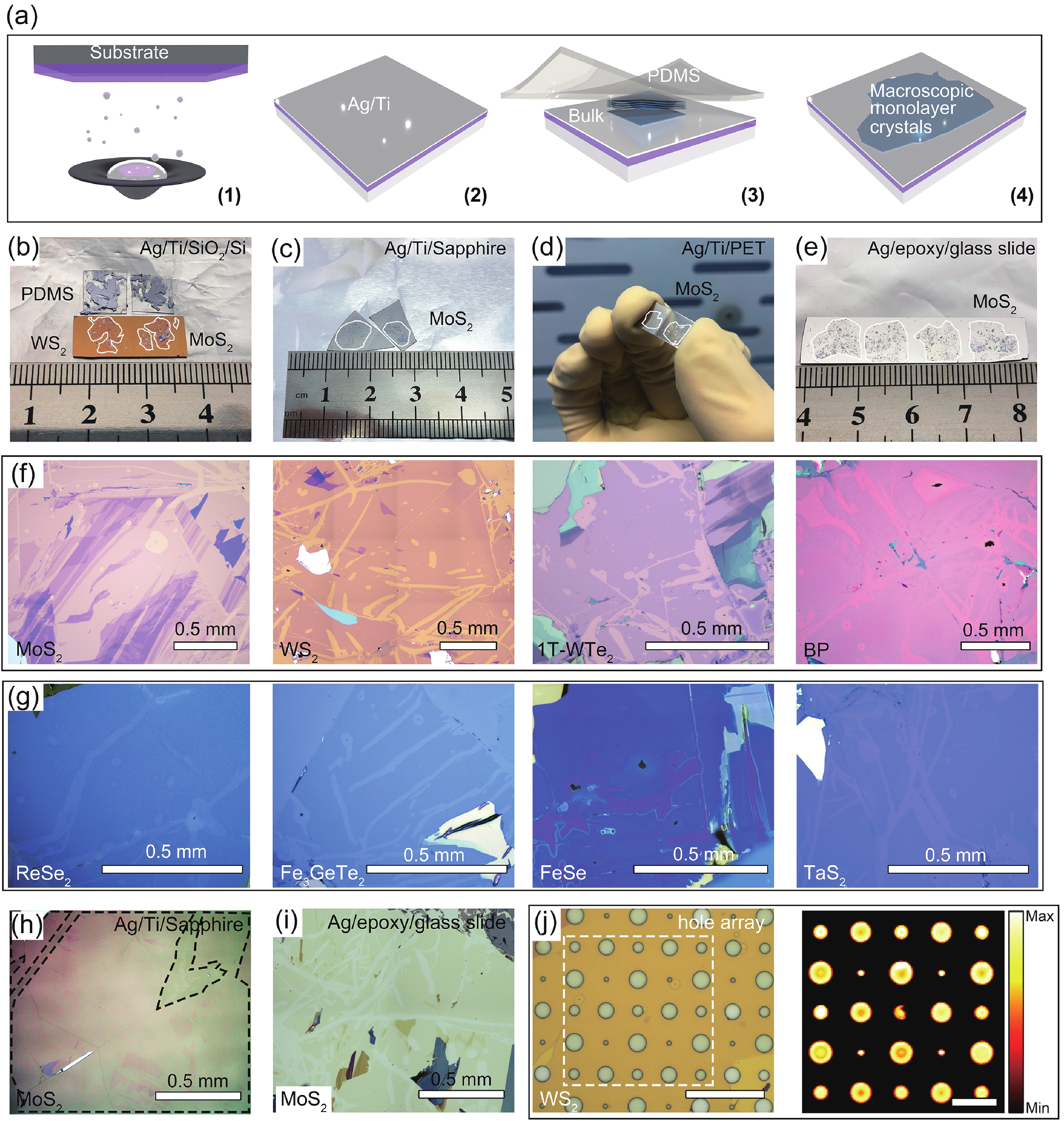
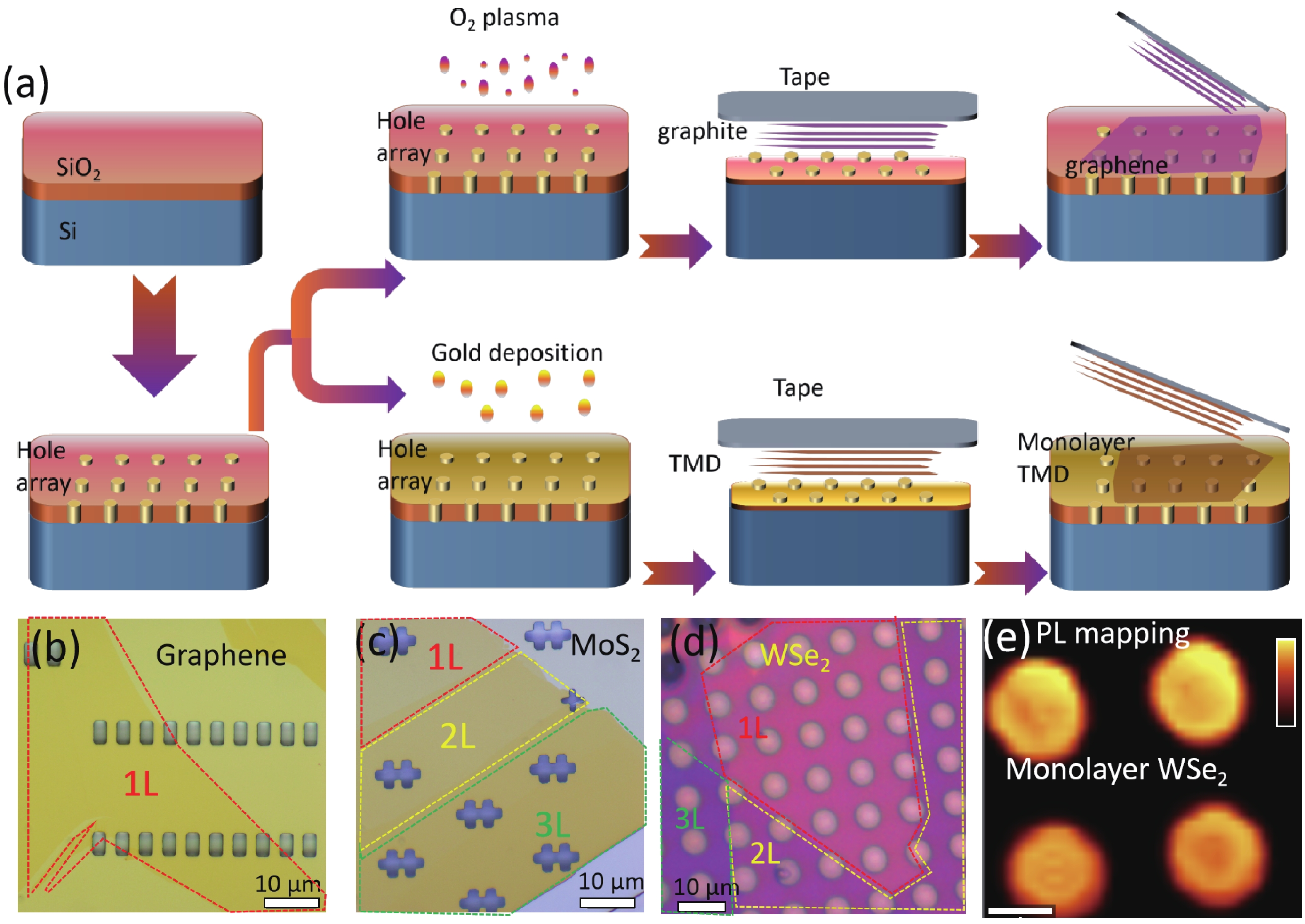
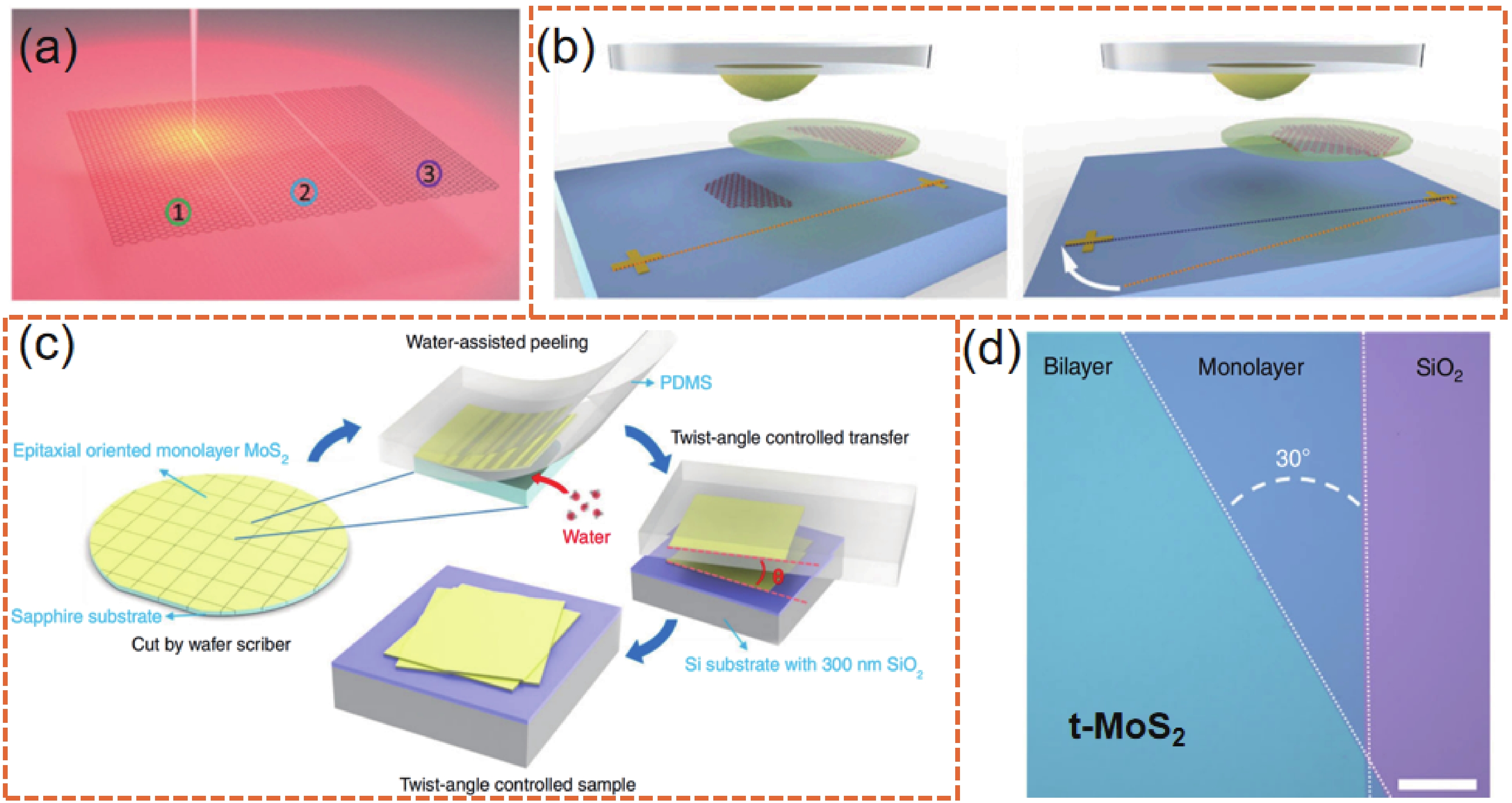
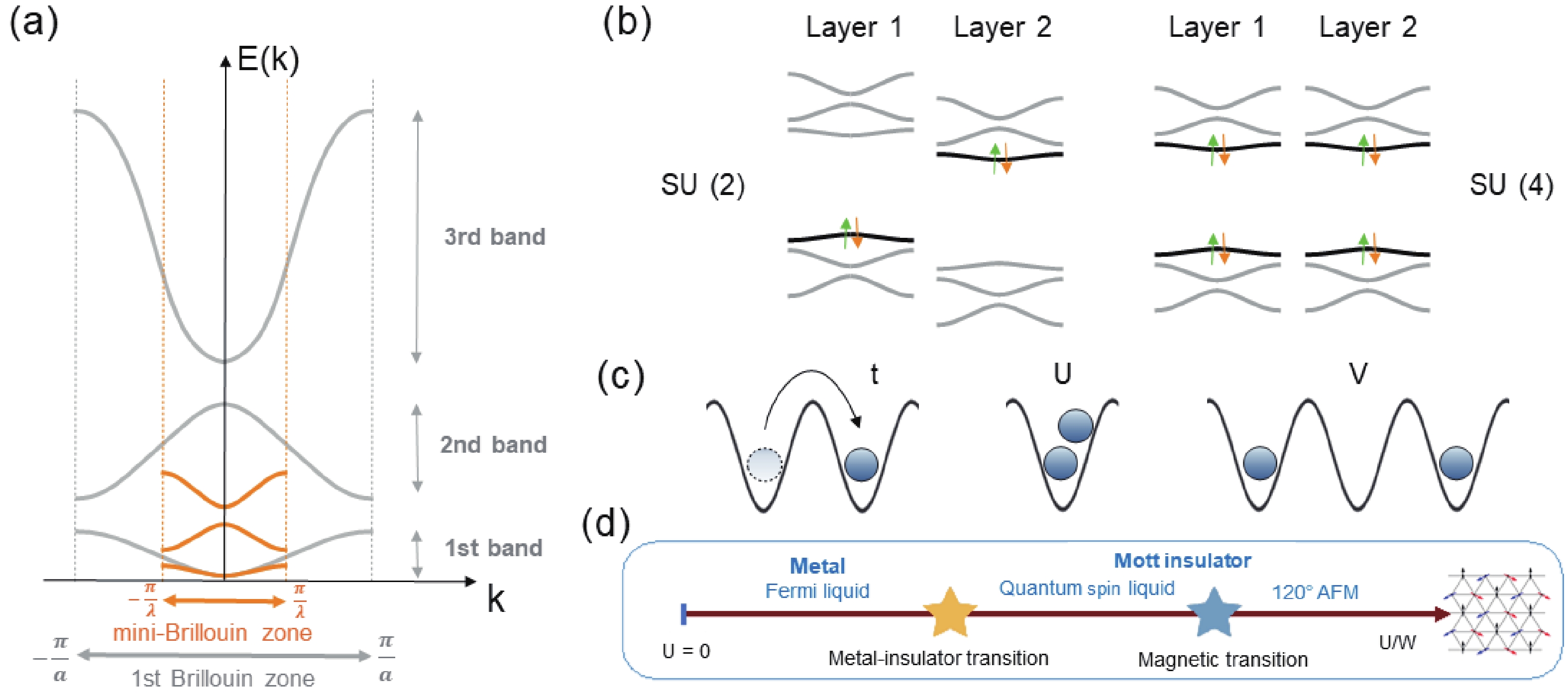
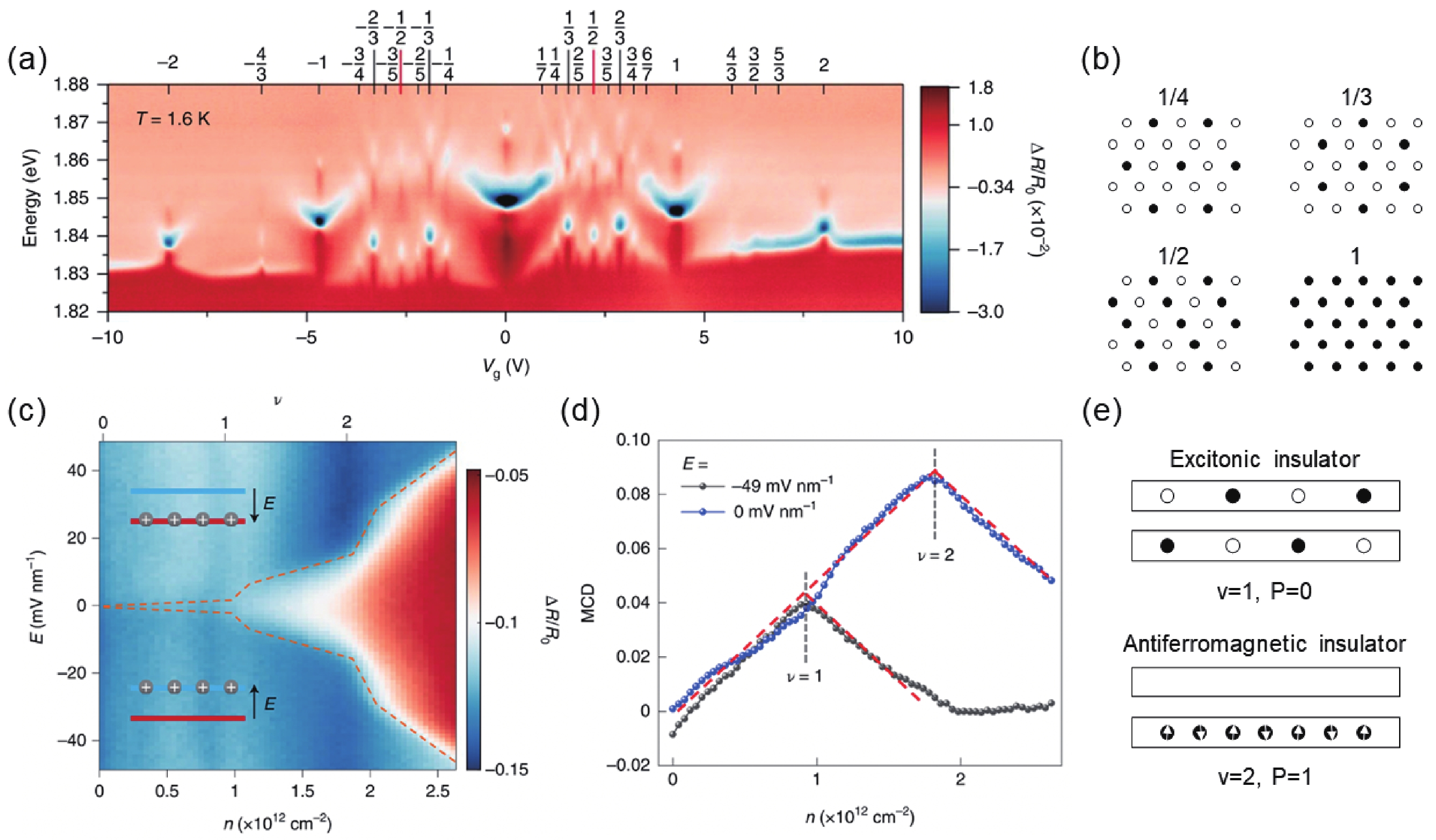
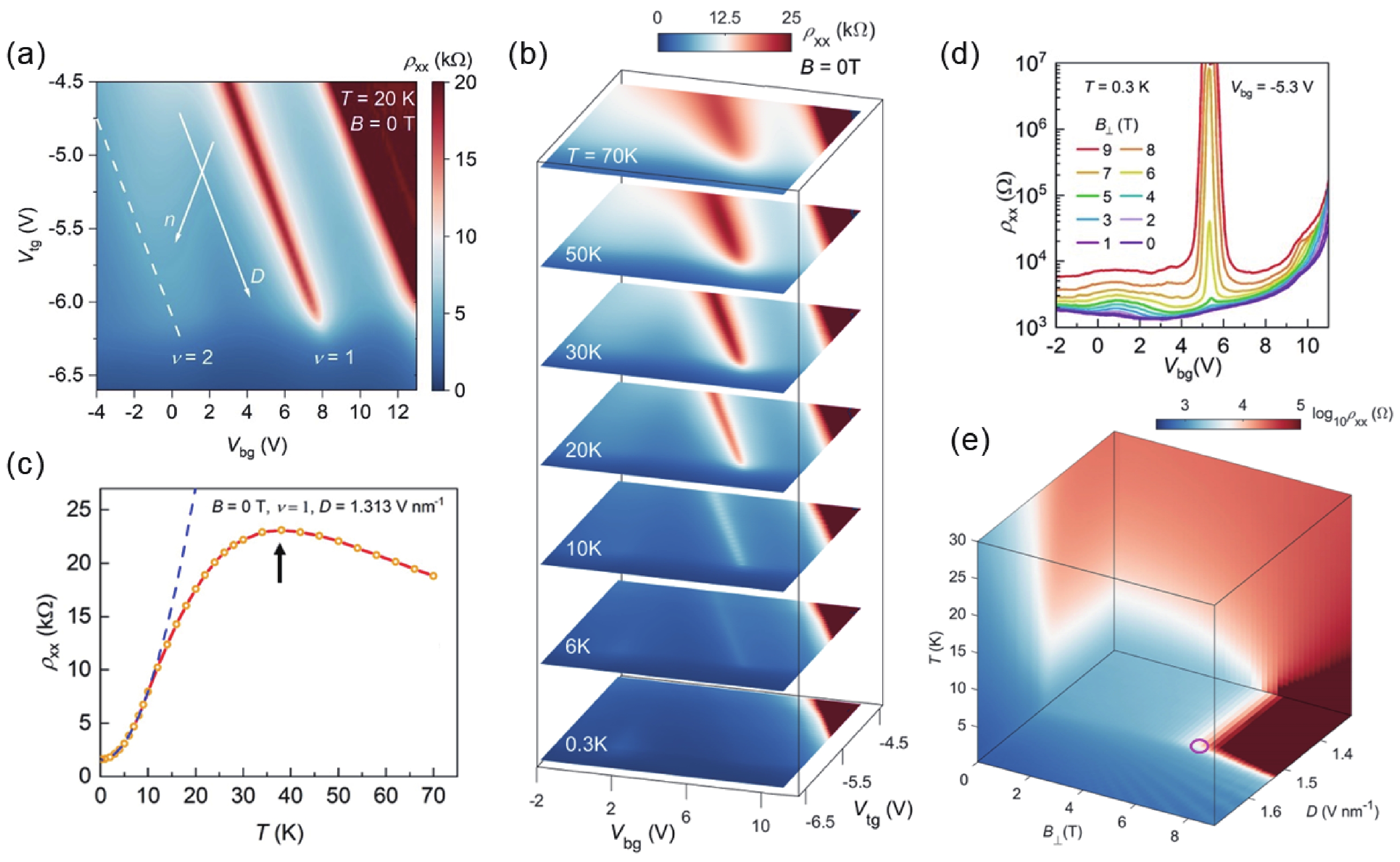
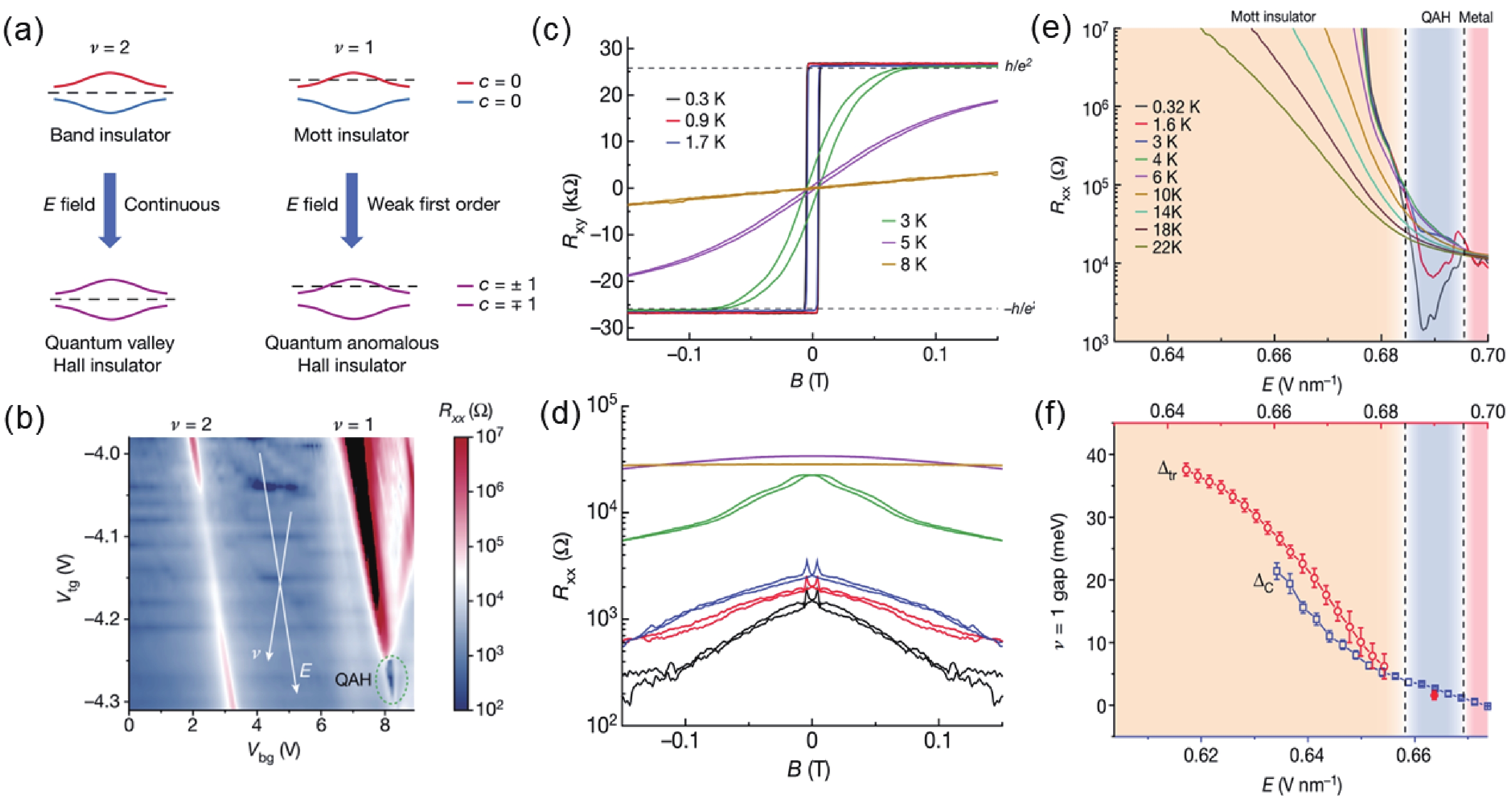










 Xinyu Huang:is a Ph.D. candidate at the School of Integrated Circuits and Electronics, Beijing Institute of Technology. Her current research interests focus on the preparation of 2D semiconductors, the design of nano devices, and also the physical properties of low-dimensional quantum materials
Xinyu Huang:is a Ph.D. candidate at the School of Integrated Circuits and Electronics, Beijing Institute of Technology. Her current research interests focus on the preparation of 2D semiconductors, the design of nano devices, and also the physical properties of low-dimensional quantum materials Xu Han:received his B.S. degree from Beijing University of Technology in 2018. He is currently a Ph.D. candidate at School of Integrated Circuits and Electronics, Beijing Institute of Technology. His research interest includes low-dimensional quantum structure and devices and photoelectrical properties of 2D semiconductors
Xu Han:received his B.S. degree from Beijing University of Technology in 2018. He is currently a Ph.D. candidate at School of Integrated Circuits and Electronics, Beijing Institute of Technology. His research interest includes low-dimensional quantum structure and devices and photoelectrical properties of 2D semiconductors Yeliang Wang:is a professor at Beijing Institute of Technology (BIT). He received his Ph.D. degree from Institute of Physics (IOP), CAS in 2004. Then he worked as a postdoctoral researcher at Max Planck Institute, Germany. He worked at IOP, CAS form 2008 to 2018. He joined BIT in 2018. His research interest is the surface science, low-dimensional quantum materials, and scanning tunneling microscopy
Yeliang Wang:is a professor at Beijing Institute of Technology (BIT). He received his Ph.D. degree from Institute of Physics (IOP), CAS in 2004. Then he worked as a postdoctoral researcher at Max Planck Institute, Germany. He worked at IOP, CAS form 2008 to 2018. He joined BIT in 2018. His research interest is the surface science, low-dimensional quantum materials, and scanning tunneling microscopy Yang Xu:is an associate professor at the Institute of Physics, Chinese Academy of Sciences. He received his Ph.D. degree in 2018 from Purdue University, after which he has worked in Cornell University as a postdoctoral researcher till the end of 2020. He joined IOP, CAS in 2020. His research interests are novel transport and optical properties of low-dimensional quantum materials
Yang Xu:is an associate professor at the Institute of Physics, Chinese Academy of Sciences. He received his Ph.D. degree in 2018 from Purdue University, after which he has worked in Cornell University as a postdoctoral researcher till the end of 2020. He joined IOP, CAS in 2020. His research interests are novel transport and optical properties of low-dimensional quantum materials Yuan Huang:is a professor at Beijing Institute of Technology. He received his Ph.D. degree from Institute of Physics (IOP), CAS in 2013. Then, he worked at Brookhaven National Lab in USA and Institute of Basic Science in South Korea. From 2017 to 2021, he worked at IOP, CAS as an associate professor. He developed novel exfoliation methods for preparing large-scale and high-quality two-dimensional materials. His research interests focus on novel physical properties of 2D materials and high-performance devices
Yuan Huang:is a professor at Beijing Institute of Technology. He received his Ph.D. degree from Institute of Physics (IOP), CAS in 2013. Then, he worked at Brookhaven National Lab in USA and Institute of Basic Science in South Korea. From 2017 to 2021, he worked at IOP, CAS as an associate professor. He developed novel exfoliation methods for preparing large-scale and high-quality two-dimensional materials. His research interests focus on novel physical properties of 2D materials and high-performance devices



